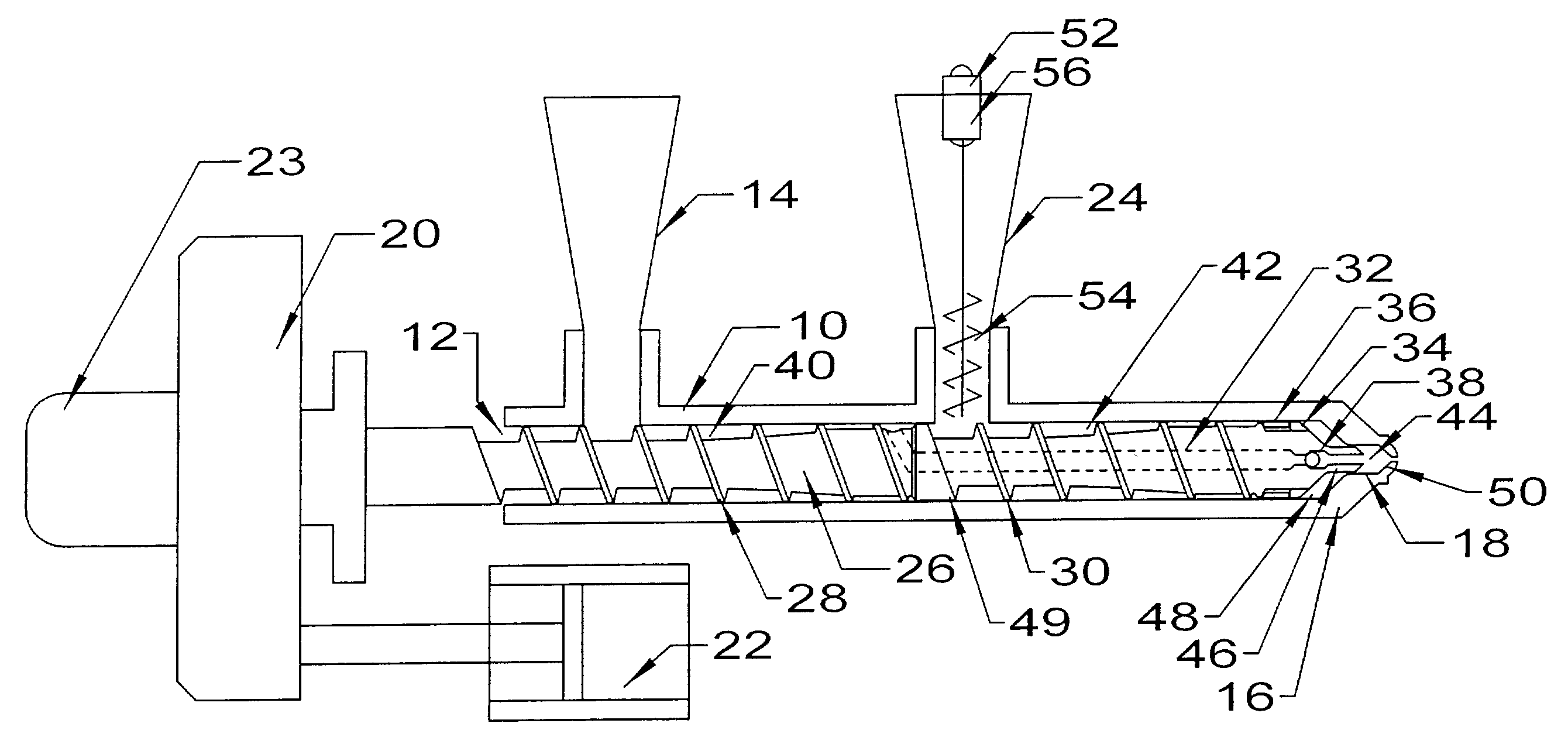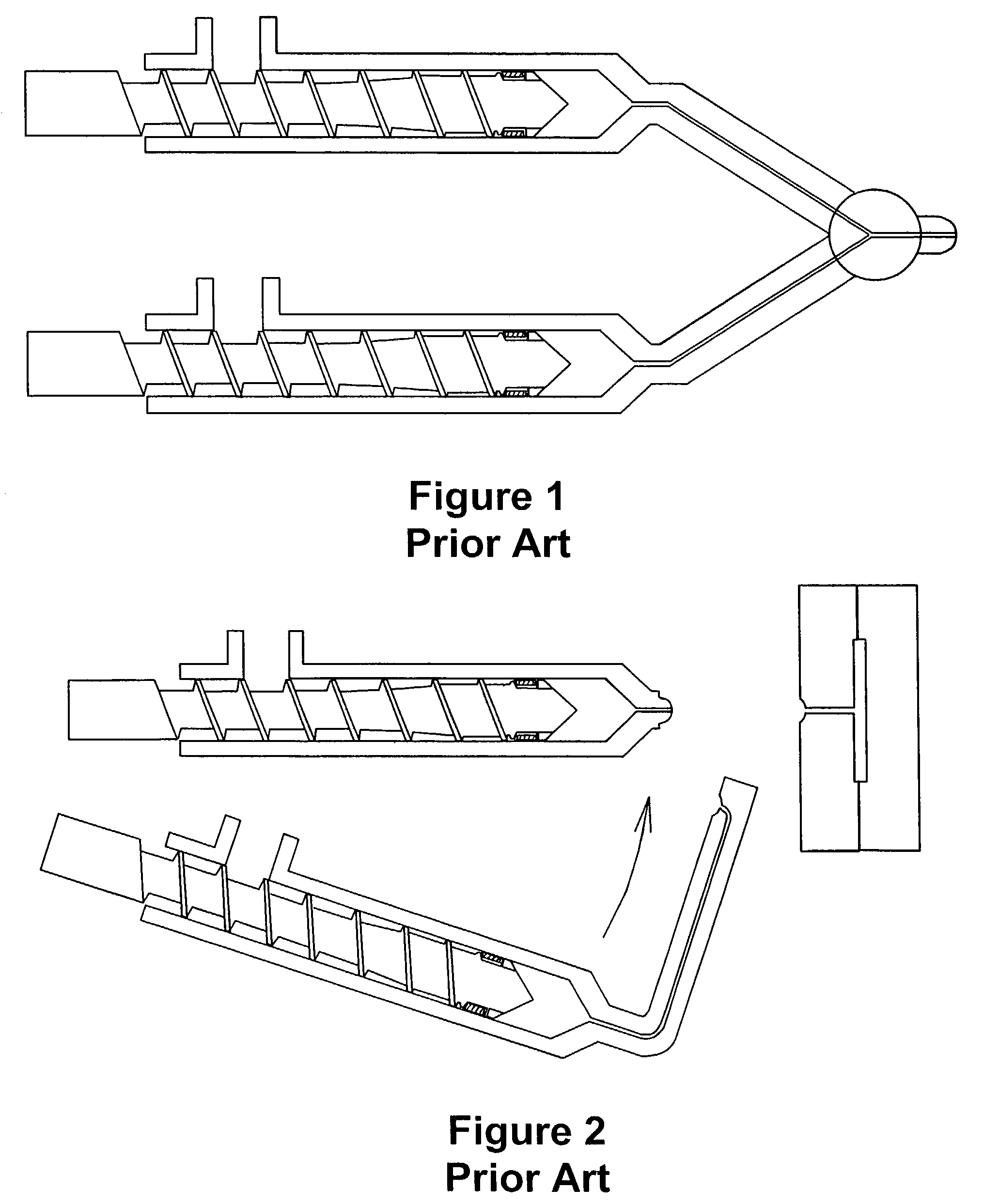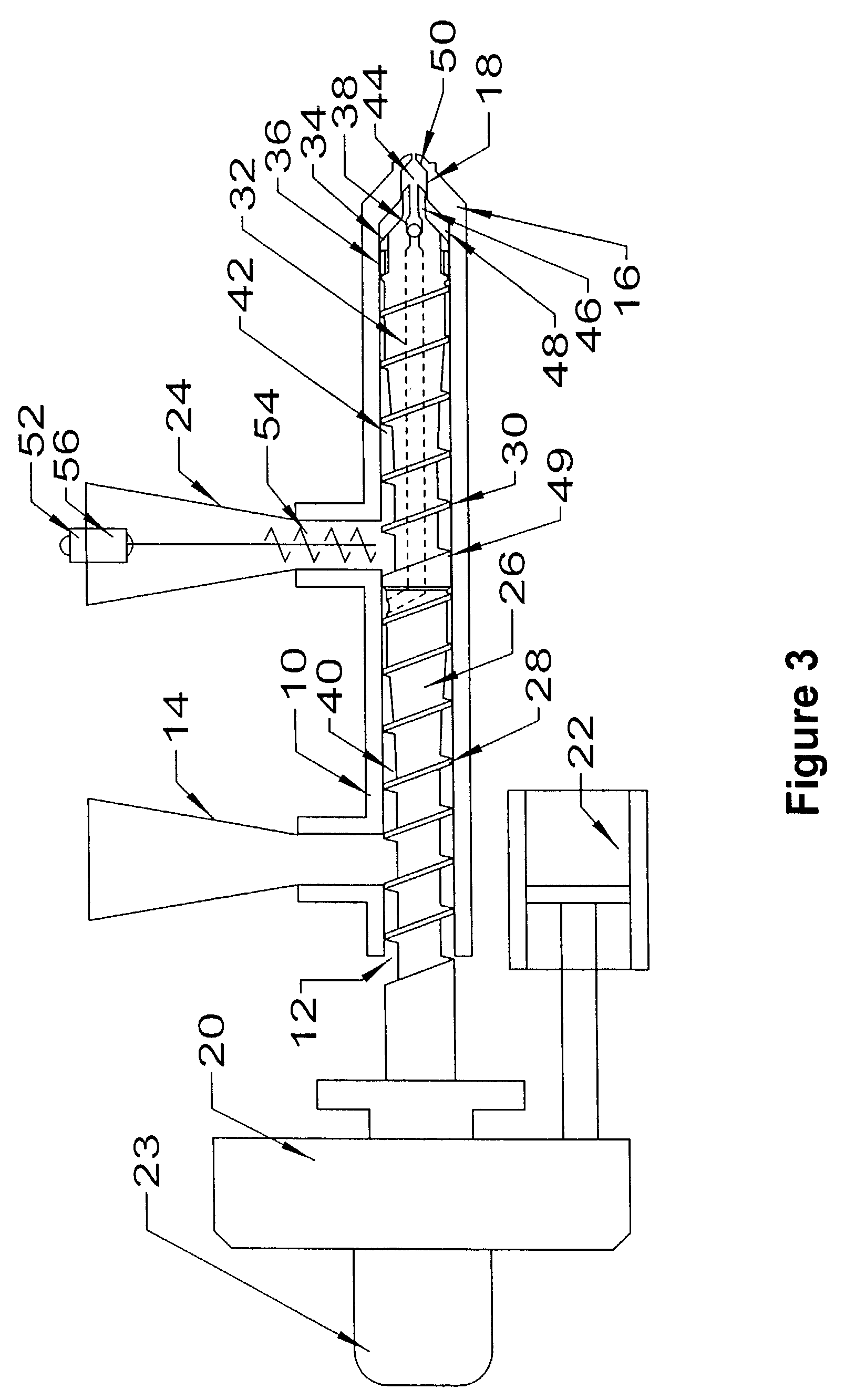Apparatus for injection molding multilayered articles
a multi-layered, machine-based technology, applied in the direction of dough shaping, applications, manufacturing tools, etc., can solve the problems of high initial cost of the required components and associated control capability, high cost and complexity of a machine requiring two or more independent reciprocating screws, and high cost and complexity of producing a screw with a sufficiently large central bore, etc., to achieve the effect of minor and low-cost changes
- Summary
- Abstract
- Description
- Claims
- Application Information
AI Technical Summary
Benefits of technology
Problems solved by technology
Method used
Image
Examples
example 1
[0067]An injection molding machine having a 45 millimeter barrel diameter, produced by Ferromatik Milacron of Batavia, Ohio, was fitted with a barrel and screw in accordance with the present invention. A single starve feeder was mounted to the downstream feed throat. Using a variety of molds, multilayer parts having a weight of 12 grams up to 250 grams were produced. In these parts, the inner core layer was varied between 10% and 70% of the total part weight. Thermoplastic materials used successfully included polypropylene, polyethylene, acrylonitrile butadiene styrene, nylon, polyphenylene oxide, acetal, polyvinyl chloride, and polycarbonate.
example 2
[0068]On the machine in Example 1, a second starve feeder was mounted to the upstream feed throat. With the second feeder, parts having a core percentage as high as 95% by weight were produced, with the core material being polypropylene and the skin material being thermoplastic elastomer.
example 3
[0069]The machine in Example 1 was fitted with front end components as shown in FIG. 11. Using a mold with two independent runners feeding different points of a common cavity, parts were produced having regions composed throughout of two different materials, rather than of a sandwich structure.
PUM
| Property | Measurement | Unit |
|---|---|---|
| Time | aaaaa | aaaaa |
| Temperature | aaaaa | aaaaa |
| Length | aaaaa | aaaaa |
Abstract
Description
Claims
Application Information
 Login to View More
Login to View More - R&D
- Intellectual Property
- Life Sciences
- Materials
- Tech Scout
- Unparalleled Data Quality
- Higher Quality Content
- 60% Fewer Hallucinations
Browse by: Latest US Patents, China's latest patents, Technical Efficacy Thesaurus, Application Domain, Technology Topic, Popular Technical Reports.
© 2025 PatSnap. All rights reserved.Legal|Privacy policy|Modern Slavery Act Transparency Statement|Sitemap|About US| Contact US: help@patsnap.com



